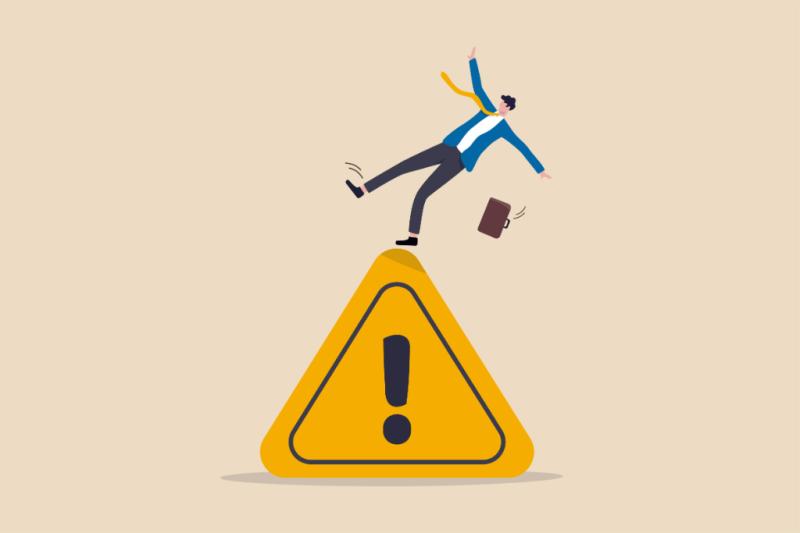Why Should You Get A Fall Risk Assessment?

Imagine walking down the trail, the sun peeking through the leaves, a gentle breeze in the air. Suddenly, your foot catches on a root you didn't see, and in an instant, you're on the ground.
It's a startling reminder of how quickly a simple walk can turn into a trip to the hospital. Falls, particularly as you age, aren't mere mishaps. They're signposts pointing to deeper underlying risks in our health and environment.
A fall risk assessment is your secret weapon, a proactive step not just to avoid the fall but to dismantle the hidden hazards that lead to it. It's about reclaiming your confidence with every step you take, in your home or on that sun-dappled trail.
So, let's learn more about why getting a fall risk assessment is a choice that could redefine your independence and safety.
Know More About Your Risks
A fall risk assessment pinpoints the unique factors that elevate your likelihood of falling. Perhaps your medications affect your balance, or maybe it's a vision impairment that's not fully addressed.
Even your home environment, with potential hazards like loose rugs or poor lighting, plays a part. By identifying these specific risk elements, the assessment equips you with the necessary knowledge to tackle them effectively.
This personalized approach ensures that the preventive measures you take aren't just general advice. They're targeted strategies that address your individual needs, significantly enhancing their effectiveness in reducing your risk of falls.

Prevent Severe Injuries
Preventing severe injuries is a key benefit of a fall risk assessment. Falls often result in significant harm, such as fractures or head injuries, particularly among older adults. These injuries can lead to prolonged hospital stays, extensive rehabilitation, or permanent disability.
By addressing specific risk factors, a fall risk assessment equips you with the strategies to avoid such devastating outcomes. It's not just about preventing the fall itself but ensuring that if a fall does occur, the consequences are minimized.
This allows you to safeguard your health and maintain your lifestyle without the shadow of potential injuries looming over you. Taking this step isn't just cautious but a wise investment in your long-term well-being.
Maintain Your Independence
A fall risk assessment plays a critical role in maintaining your independence. It identifies potential hazards in your daily environment and pinpoints personal health issues that could jeopardize your autonomy.
Armed with this knowledge, you can make informed decisions and take preventative measures. Simple home modifications or adopting specific exercises can significantly reduce your risk of falling. These proactive steps ensure you continue to live independently, perform daily tasks with confidence, and enjoy your usual activities without the constant fear of falling.
Safeguarding your independence starts with recognizing and addressing the risks. A fall risk assessment gives you the power to do just that, keeping you in control of your life and your future.
Reduce Healthcare Costs
Falls often result in costly medical interventions, from emergency services to prolonged hospital stays and rehabilitation. These expenses can strain your finances, especially if you're on a fixed income.
By identifying and addressing your fall risks, you're not just safeguarding your health; you're also protecting your wallet. The cost of a fall risk assessment pales in comparison to the potential medical bills from a single fall-related injury.
Invest in your health through a fall risk assessment and enjoy the dual benefits of physical well-being and financial security. Remember, preventing a fall is always more cost-effective than treating one.
Enhance Your Quality Of Life
Enhancing your quality of life starts with a fall risk assessment. It's not just about preventing injuries; it's about freeing you from the fear that comes with the risk of falling. This fear can be paralyzing, limiting your social interactions and daily activities.
By understanding and mitigating your fall risks, you regain confidence. This newfound confidence revitalizes your willingness to engage in life fully. You'll find yourself more active when attending family gatherings and enjoying hobbies without the constant worry of a fall.
Ultimately, a fall risk assessment doesn't just safeguard your physical well-being; it liberates you mentally, allowing you to live each day to its fullest potential.
Tailor Your Exercise And Diet
Based on the assessment, you'll get tailored exercise recommendations that focus on enhancing your balance, strength, and flexibility. These aren't just any exercises; they're chosen specifically for you, addressing your unique needs and capabilities.
You'll also receive guidance on dietary choices. This is crucial because what you eat can affect your bone health and muscle function. Incorporating calcium-rich foods and vitamin D, for example, can strengthen your bones, reducing the severity of injuries if you do fall.
This personalized strategy is key in effectively reducing your fall risk and maintaining your overall health.
Conclusion
A fall risk assessment is more than just a precaution. It's a critical step in taking control of your health and future. It empowers you to understand and address your unique risk factors, prevents severe injuries, and maintains your cherished independence. Don't wait for a fall to happen. Take the initiative, get assessed, and embrace a safer, more confident future.
More to Read:
Previous Posts:











